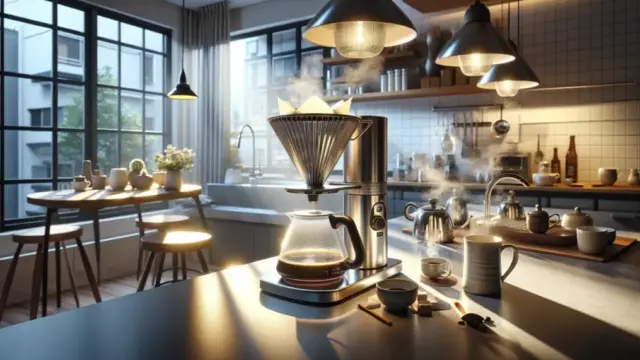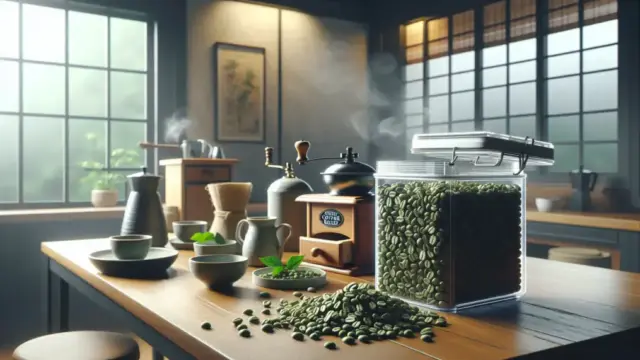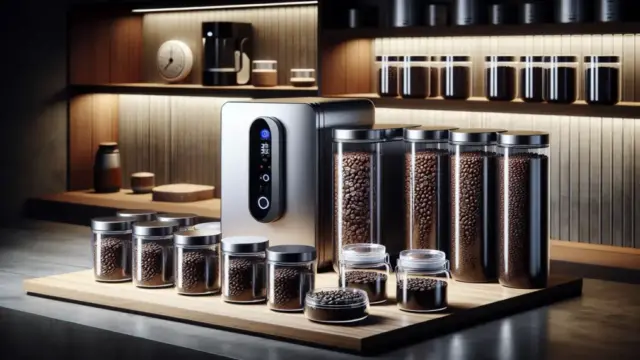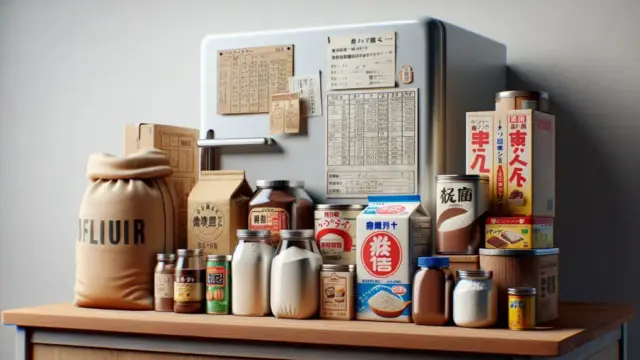Storing green coffee beans properly is crucial for maintaining their freshness. Even the highest quality beans can lose their delightful flavors if they’re not stored correctly. In this article, we’ll dive into some key points to ensure your green coffee beans stay fresh for as long as possible. By creating the right environment and adopting effective storage methods, you can enhance your daily coffee experience.
We’ll also cover how to choose the right storage containers and techniques for long-term preservation. With this knowledge, you’ll be able to unlock the full aroma and taste of your coffee. Let’s explore the best practices for storing green coffee beans!
- Tips for creating an ideal storage environment for green coffee beans
- How to choose the right storage container
- Techniques for long-term preservation
Creating the Ideal Storage Environment for Green Coffee Beans
To maintain the freshness of green coffee beans, it’s essential to establish a suitable storage environment. Green beans are sensitive to factors like temperature, humidity, and light, and without the right conditions, their flavor and aroma can be compromised. In this article, we’ll go over key points to keep your coffee beans in optimal condition.
Managing Temperature and Humidity
The quality of green coffee beans can significantly change if the temperature and humidity are not managed properly. First and foremost, it’s important to keep the beans in a cool place. Generally, a temperature range of 59°F to 77°F (15°C to 25°C) is considered ideal. Humidity is another critical factor. Green beans easily absorb moisture, so if the humidity is too high, it can lead to mold and spoilage. Conversely, if the humidity is too low, the beans can dry out, resulting in a loss of flavor.
Therefore, it’s crucial to carefully manage both temperature and humidity when storing your coffee beans. Ideally, the humidity should be around 60%. Adjustments may be necessary depending on seasonal changes in the environment.
- Keep the temperature between 59°F to 77°F
- Aim for a humidity level of around 60%
- Make adjustments according to the season
Tips for Avoiding Light Exposure
Exposure to light can accelerate the oxidation process of green coffee beans, making direct sunlight particularly harmful. It’s best to store the beans in a place where they won’t be exposed to light, but the storage container also plays a crucial role. Using opaque containers can help minimize light exposure.
If you’re using clear containers, consider placing them in a dark area or covering them with a cloth to block out light. Taking these precautions to avoid light exposure is vital for preserving the freshness of your coffee beans.
- Choose a storage location that avoids light
- Use opaque containers for storage
- Place clear containers in dark areas
How to Choose the Right Storage Container
To keep coffee beans fresh, selecting the right storage container is essential. The type of container you choose can significantly affect the quality of the beans, making this decision very important. In this article, we’ll dive into the significance of airtight containers and the characteristics of various materials.
The Importance of Airtight Containers
Coffee beans are prone to oxidation when exposed to air, which can diminish their flavor. That’s why using an airtight container is crucial. These containers block outside air and moisture, helping to preserve the beans’ freshness. Vacuum-sealed containers and resealable bags with zippers are particularly effective at preventing oxidation.
When selecting an airtight container, it’s important to choose one with a sturdy lid. This will help prevent any transfer of odors during storage and keep the coffee’s aroma locked in.
- Prevent oxidation with airtight containers
- Vacuum-sealed containers and resealable bags are effective
- Choose containers with sturdy lids
Characteristics and Selection of Different Materials
Storage containers come in a variety of materials, each with its own unique features. Glass containers allow you to easily check the contents, but they can be sensitive to light, so it’s important to choose ones that offer light protection. Plastic containers are lightweight and easy to handle, but some may degrade over time, so selecting food-safe materials is crucial.
Metal containers provide excellent light protection and are ideal for long-term storage, but be cautious as some internal coatings can transfer odors. By understanding these characteristics, you can choose a storage container that fits your lifestyle, helping to keep your coffee beans fresher for longer.
- Glass containers are easy to see into but watch out for light exposure
- Plastic containers are lightweight, but choose safe materials
- Metal containers have high light protection but be mindful of odor transfer
Effective Methods for Long-Term Coffee Bean Storage
When it comes to storing green coffee beans for an extended period, choosing the right method is crucial. Knowing some techniques to maintain freshness means you can enjoy delicious coffee anytime you want. In this section, we’ll dive into the pros and cons of freezing coffee beans and how to effectively use desiccants.
The Pros and Cons of Freezing
Freezing is an excellent way to keep coffee beans fresh for a long time. By freezing, you can prevent oxidation and extend the beans’ flavor. However, there are some downsides to consider. For instance, fluctuations in your freezer’s temperature or frequently opening the door can cause the beans to deteriorate. Additionally, after removing the beans from the freezer, it’s essential to let them thaw completely and avoid moisture absorption.
While freezing is indeed an effective method, it requires proper management. When you freeze your beans, it’s best to store them in airtight containers and portion them out as needed.
- Freezing prevents oxidation and maintains flavor
- Be mindful of temperature changes
- Store in airtight containers and portion out
Utilizing Desiccants
In addition to freezing, using desiccants is another effective strategy for storing coffee beans. Desiccants help control humidity inside the storage container, preventing the beans from absorbing moisture. Using silica gel or similar desiccants can significantly reduce the impact of humidity.
Desiccants are easy to use; simply place them inside the container. However, it’s important to replace them regularly. Old desiccants lose their effectiveness, so swapping them out for fresh ones ensures that you maintain the optimal storage environment.
If you found this article helpful, you might also enjoy reading “How to Store Fresh Coffee Beans and Why It Matters.” Gaining a deeper understanding of storage methods can provide you with valuable tips to enhance your coffee experience.
- Control humidity with desiccants
- Use silica gel or similar products
- Regular replacement is necessary
Common Pitfalls to Avoid When Storing Coffee Beans
When it comes to storing green coffee beans, there are several potential pitfalls that can ruin the beans’ flavor and aroma if you’re not careful. In this section, we’ll focus on two critical aspects to pay attention to: preventing odor transfer and protecting against pests.
Preventing Odor Transfer
Green coffee beans have a tendency to absorb surrounding odors easily. This means that the place you store them and the type of container you use can lead to unwanted smells from other foods seeping into your beans. This risk is particularly high when beans are kept near strongly scented items or seasonings, which can compromise their unique flavor profile.
To prevent odor transfer, it’s essential to store your green coffee beans in a tightly sealed container and keep them away from other foods. Regularly cleaning and deodorizing the storage container will also help create a better environment for preserving your beans.
- Green coffee beans easily absorb surrounding odors
- Use a sealed container for storage
- Store away from other foods
Tips for Pest Control
Pests can be a threat to green coffee beans, especially in humid storage conditions that attract them. Keeping your storage area clean and managing humidity levels are crucial steps in preventing pest infestations.
Using desiccants can also be an effective way to deter pests. Additionally, choosing storage containers that are resistant to pest intrusion is a smart move. By implementing these strategies, you can safeguard your precious coffee beans from unwanted pests.
- Humid environments can attract pests
- Maintain cleanliness in your storage area
- Use desiccants and select pest-resistant containers
Summary
In this article, we explored the best ways to store green coffee beans, highlighting the right environment, containers, and techniques for long-term preservation. Maintaining freshness is crucial, which means carefully managing temperature, humidity, and light exposure. Using airtight containers helps protect the beans from outside air and moisture, while methods like freezing and using desiccants can also be quite effective.
Additionally, it’s important to consider odor transfer and pest control. By keeping these points in mind, you can enjoy the rich flavors and aromas of your coffee beans for a longer period. To enhance your daily coffee experience, we encourage you to try out these storage methods.
- Manage temperature, humidity, and light to keep beans fresh
- Use airtight containers to shield against external influences
- Don’t forget about pest control and preventing odor transfer
Implement these strategies to help your precious green coffee beans last longer, and enjoy delightful coffee moments. If you have any thoughts or questions about this article, please feel free to leave a comment!






































































Comment